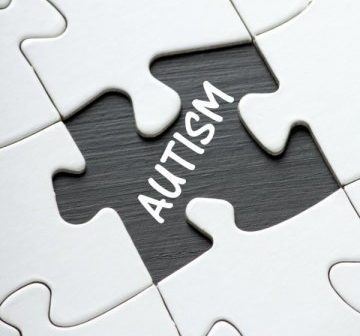Researchers of the Carolina Institute for Developmental Disabilities and the University of North Carolina at Chapel Hill may have found a way to predict whether an infant will go on to develop autism. During the first year in the life of a child, an overgrowth in brain volume can be an indicator whether a child is at high risk of developing autism spectrum disorder by age two.
Autism is considered a development disability with behavioral symptoms that usually become more obvious between ages two and five. Common symptoms include difficulties in the communication and repetitive behaviors. According to the Center of Disease and Prevention control, one in 67 children in the United States has been identified with autism spectrum disorder.
“I would say early signs of autism are poor interaction with parents and other children. They often have a lack of acknowledgement of other people around them, they lack to understand others emotions so they often say the wrong things at the wrong times,” said Heidi Churchill, who is a sophomore with a major in elementary education, who has a brother who is autistic.
The journal Nature published a small part of the study in 2017, in which a new diagnostic method uses MRI scans to look for features of autism. Lead author of the study is Heather Cody Hazlett, who is a psychologist at the Carolina Institute for Development Disabilities.
In the study, Dr. Hazlett and her fellow researchers focused on two test groups; one high risk group with 106 infants that had previous cases of autism in their family or their siblings and a low-risk group consisting out of 42 infants with no immediate family history of autism.
“Our data suggest that very early, post-natal hyperexpansion of cortical surface areas may have an important role in the development of autism. The rate of cortical surface area expansion from 6 to 12 months was significantly increased in individuals diagnosed with autism at 24 months, and was linked to subsequent brain overgrowth, which, in turn, was linked to the emergence of social deficits,”
After analyzing the data, the team created an algorithm that could predict, which infants are most likely to be diagnosed with autism by age two. Using the algorithm the researchers made nearly perfect predictions on which infants would develop autism.
“One of the things that has been shown over and over again is, the earlier you can begin an intervention, like behavioral therapy the greater the chance of limiting some of the characteristics of autism. That’s why there’s a lot of excitement around this study,”
This new study would open new opportunities for the early stage treatment of autism. Currently, the average age when a child is diagnosed with autism is around four years of age.
If this new technology enables doctors to diagnose children at age two, it could help nurture their development in a way that is most beneficial to them
However, there is a downside with this new diagnosis method. Using expensive MRI technology to screen every baby for a small probability of developing autism is very unlikely. It would be useful for infants that are at high-risk of developing autism, such as younger siblings of children that have been diagnosed before. These infants are much more likely to develop autism as well.
“We have one project that we are hoping to get funded to replicate this (finding) with a new group of kids. We know a lot still changes and happens even beyond the second year, and we’re very interested in observing that as well,” . Especially, the high-risk children that have an autistic sibling and were not diagnosed with autism during the research within their first two years.
“They don’t have autism necessarily, but they often are getting other problems, whether anxiety, learning problems or ADHD. It would be very interesting to see if we could find early clues to some of those issues as well,” Hazlett continued.
Overall, the research has been a breakthrough in early autism diagnosis. As time goes on and the technology becomes better and more affordable it will help more and more children to provide them with the right treatment at an early age.





